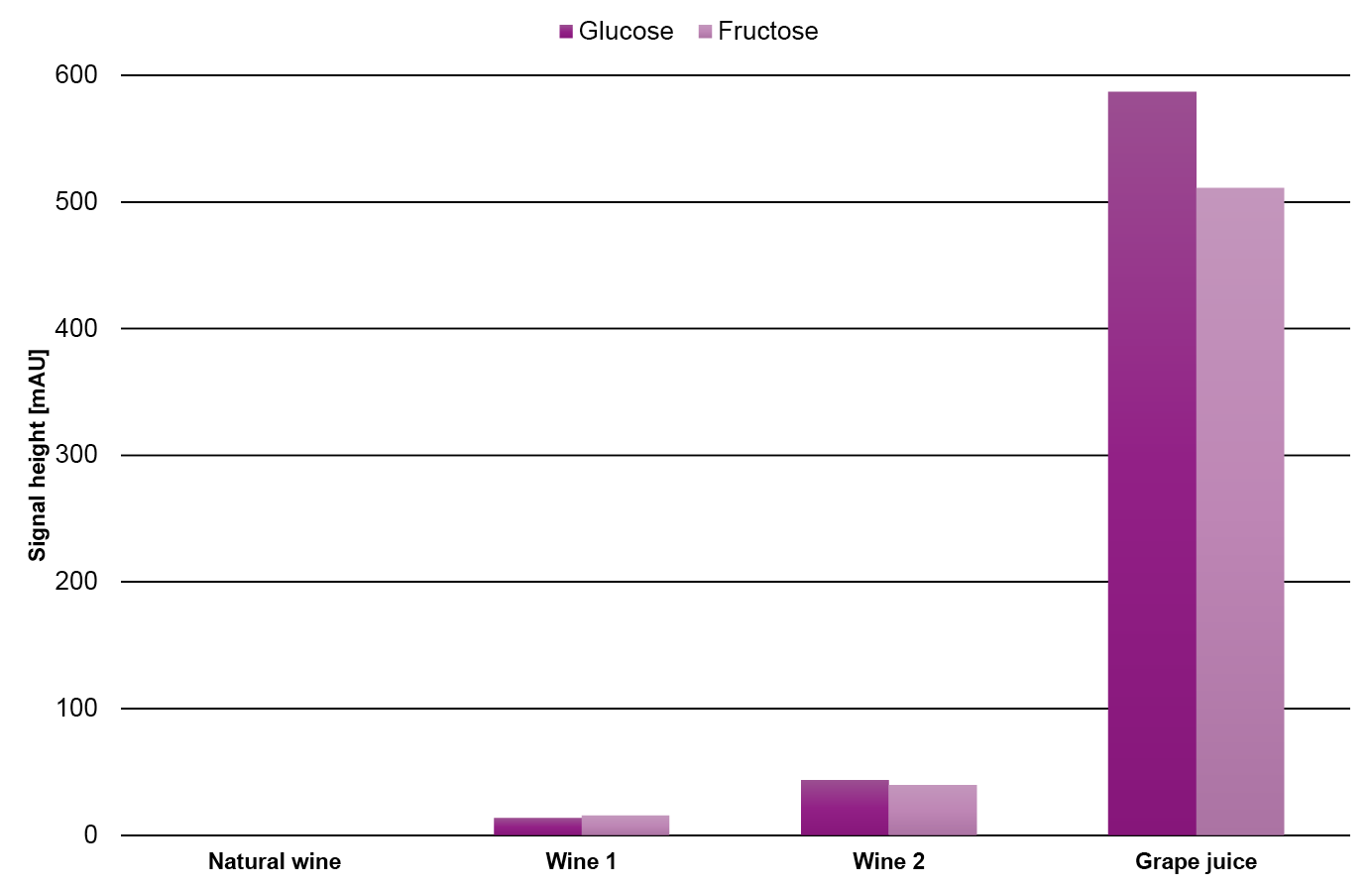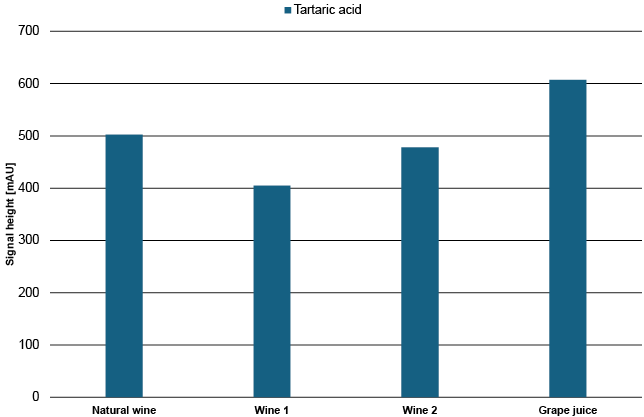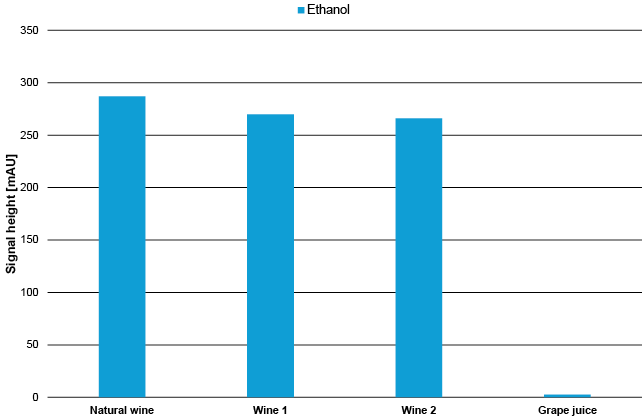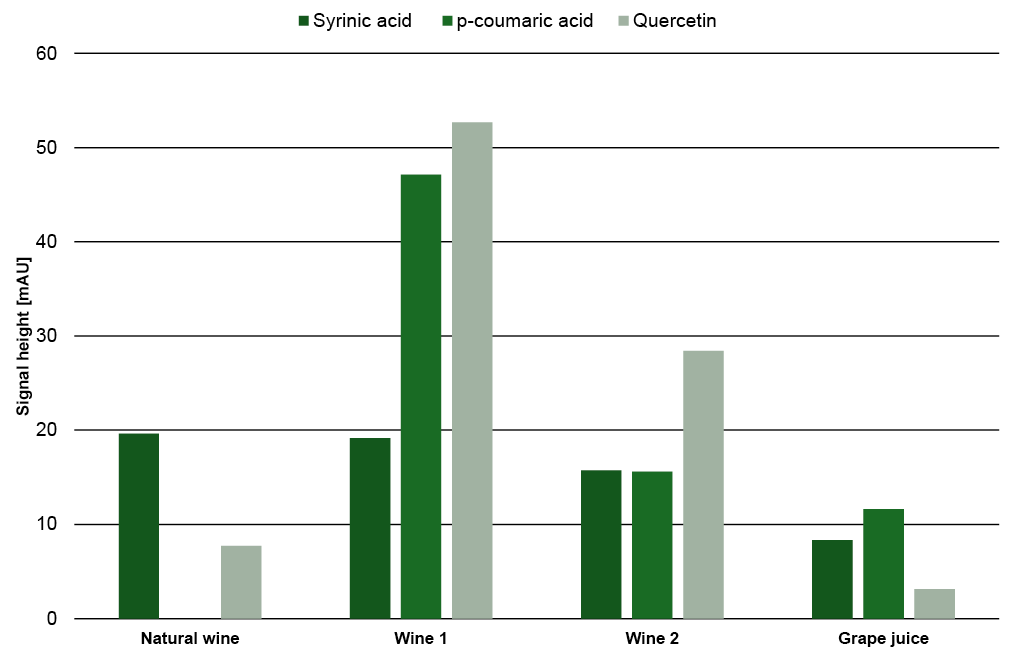How to explore the chemistry of natural wine?
Natural wine is the latest trend among wine enthusiasts and is gaining popularity, especially among younger generations. But what is the difference from regular wine? And how can I explore the chemistry behind them? Let me tell you...
High performance liquid chromatography (HPLC) is an amazing analytical method that allows us to separate, identify and quantify substances like sugars and organic acids. This gives us a fantastic insight into the chemical composition of natural wine!
In HPLC, the sample mixture is passed through a column filled with a solid stationary phase, whereby the stationary phase is made up of a chemical material that has specific chemical groups bound to its surface. The substances and the stationary phase interact with each other in different ways, which allows them to separate. Let me give you an illustrative example. Imagine a race between a jaguar and a turtle. The jaguar represents a substance with weak interactions that passes through the column quickly, while the turtle symbolises a substance with strong interactions that moves more slowly through the column. This amazing process leads to the separation of the substances. Once this separation is complete, a detector registers the components and creates a chromatogram in which the number of peaks equals the separated sample compounds, and the area of each peak represents the amount of each compound.
Chromatogram of natural wine. 1: tartaric acid, 2: succinic acid, 3: glycerol, 4: acetic acid, 5: ethanol. Graphic by KNAUER
What is natural wine and why does its chemistry matter?
Natural wine, also known as unadulterated wine, naked wine, raw wine or minimal or low intervention wine, is produced by spontaneous fermentation of fruit without external additives. It is typically unfiltered, without fining or modification, and is often contains no added sulphites, allowing the wine to age naturally. This brings out the true character of the fruit, resulting in wines that are fresher and more complex than regular wines. [1]
The level of various components in wine influences the flavour, appearance, chemical stability, pH value and overall quality. This is why it is so important to understand the chemical composition of wine because it's absolutely crucial for quality control. This is the only way to guarantee consistently high quality and ensure compliance with industry regulations. And it's also really exciting for us consumers to know what's in the wine. After all, these ingredients characterise our taste. For example, a high level of malic acid results in a refreshingly acidic taste. So, the next time you enjoy a glass of your favourite drink, remember that there's a fascinating science behind every sip!
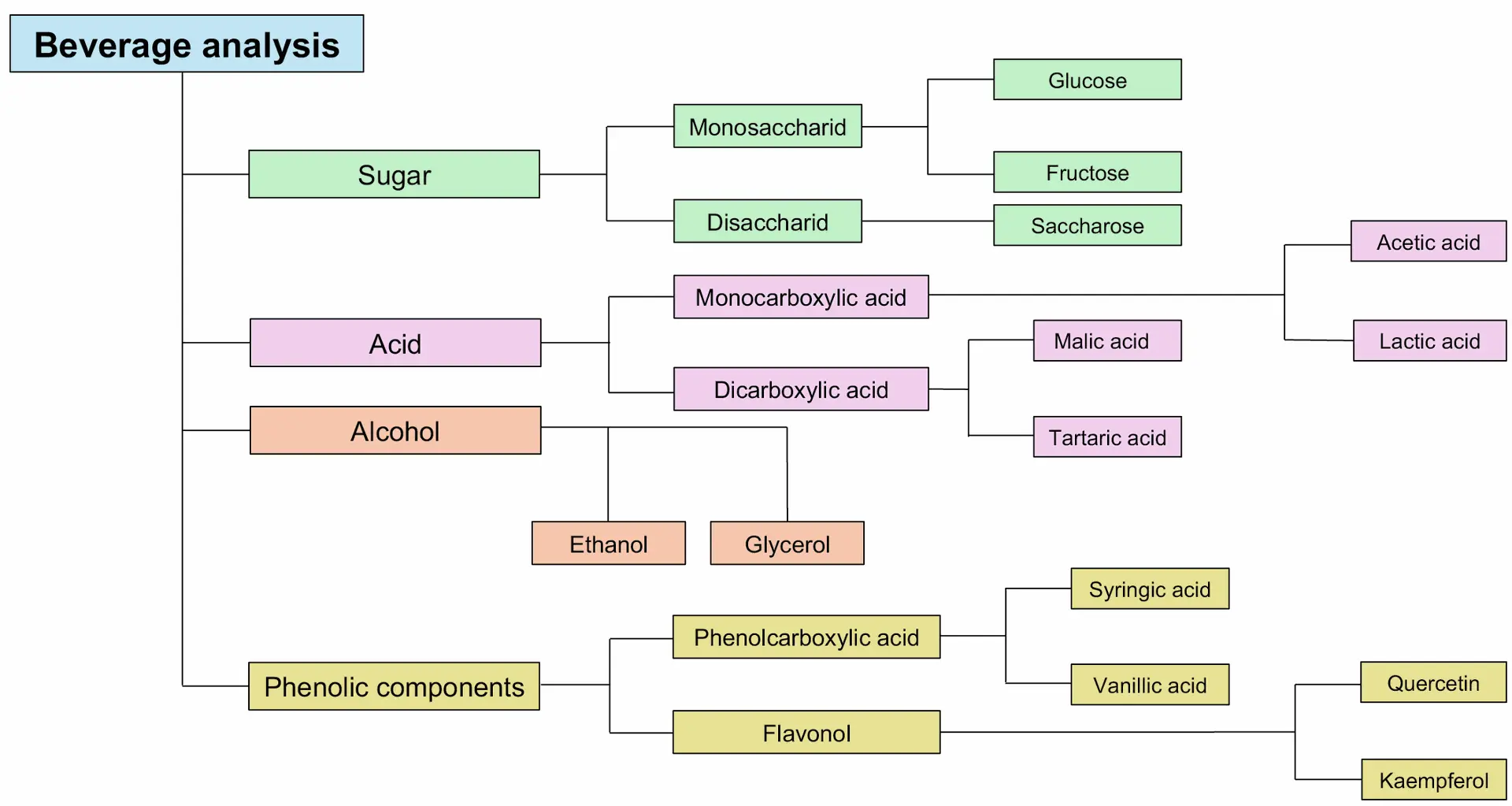
Overview of common analytes in the beverage analysis. Image by KNAUER
The world of wine is as diverse as the grapes from which it is made.
How do natural wine differ chemically?
To gain a deeper understanding, we used two rapid chromatographic methods to analyse the key components in natural wine compared to different regular wines and grape juice. This is because variations in the stationary phase, eluents and temperature affect the separation of substances. The experiments focused on different sugars, alcohols, organic acids and phenolic compounds - essential elements that influence the flavour profile and overall quality of beverage products.
The results of the measurements were truly impressive! As expected, no sugar could be detected in natural wine. This is because natural wine is almost untreated. It is made from grapes that are fermented without the use of additives or artificial sweeteners. Another convincing reason why natural wine is becoming increasingly popular. Even stars like Halle Berry have been swearing by this diet-friendly wine instead of regular wines [2].
Tartaric acid is one of the most important organic acids in wine. It plays a crucial role as a natural preservative and at the same time provides a refreshing and exciting flavour note - a truly key component! This acid is found in various fruits, especially in delicious grapes, which are used to make wine and grape juice. It is therefore not surprising that tartaric acid can be found in all four drinks.
But that's not all! We also detected ethanol in all samples, which is not really a big surprise, as the yeasts present on the raw materials ensure that the natural sugar in the fruits is fermented into alcohol. This proves that ethanol is not only found in alcoholic drinks but is also produced in many other soft drinks through natural processes.
A look at the results for phenolic compounds reveals an interesting fact: p-coumaric acid is the only substance that cannot be found in natural wine. But why is that? Well, this organic compound plays an important role as a precursor for 4-ethylphenol, which is produced by the yeast Brettanomyces in wine [3]. Whilst sulphur is effective against this yeast, Brettanomyces can easily thrive in natural wines as only minimal intervention is made [4]. The absence of p-coumaric acid in natural wine can therefore be explained by its conversion to 4-ethylphenol, which in turn can lead to a loss of quality. Brettanomyces yeasts are known to cause the so-called “mousey” notes - an unpleasant smell that reminds of horse stables, sweat or even urine [5]. So please be mindful of this problem!
Fig. 1–4 Signal heights of different sugars, organic acids and phenolic compounds in four different samples. Graphics by KNAUER
The impressive rise of natural wine is absolutely fascinating. It's really exciting to see how the industry is changing, and new, exciting drinks are appearing. Understanding the fundamental chemistry behind this is essential for both producers and consumers. Using advanced analytical methods such as HPLC, we unlock the doors to a new understanding of the science behind your glass.
If you would like to learn more about the technical details, you can find useful information in the following application note: VFD0194.pdf.
Otherwise, stay tuned for more exciting insights into the chemistry of your favourite drink!
For further information on this topic, please contact our author: wesolowski@knauer.net
[1] Bull, M. (2019). Natural wine, explained. Vox. https://www.vox.com/the-goods/2019/6/10/18650601/natural-wine-sulfites-organic
[2] Franz, A. (2024). Naturwein: Raw Wine hat weniger Zucker – und hilft beim Abnehmen! InStyle. https://www.instyle.de/beauty/abnehmen-mit-raw-wein
[3] Salameh, D., Brandam, C., Medawar, W., Lteif, R. & Strehaiano, P. (2008). Highlight on the problems generated by p-coumaric acid analysis in wine fermentations. Food Chemistry, 107(4), 1661–1667.
[4] Branco, P., Coutinho, R., Malfeito-Ferreira, M., Prista, C. & Albergaria, H. (2021). Wine Spoilage Control: Impact of Saccharomycin on Brettanomyces bruxellensis and Its Conjugated Effect with Sulfur Dioxide. Microorganisms, 9(12), 2528.
[5] Franz, W. (2021). Brett - a (nasty?) yeast. Weingut Weninger. https://www.weninger.com/en/ideas/brett



